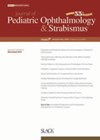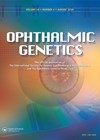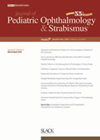
Journal Reviews
Suitability of online materials for strabismus
In this study, the authors aimed to evaluate and compare online materials about strabismus using expanded metrics including readability, complexity and suitability. They highlight areas of improvement for better counselling of patients on the internet. Ten top web pages were...
Comparison of MRI finding in oculomotor cranial nerve palsies as a result of inflammation and ischaemia
This study aimed to explore the value of asymmetric enhancement of the cavernous sinus on MRI for differential diagnosis between ocular myasthenia gravis, ischemic or inflammatory oculomotor cranial nerve palsies. Three groups were recruited consecutively over a 30-month period and...
Oxymetazoline hydrochloride for improved symmetry in Graves’ disease
Oxymetazoline hydrochloride 0.1% ophthalmic solution has Food & Drug Administration (FDA) approval for use in involution ptosis. It is an alpha 1 agonist and partial alpha 2 agonist that stimulates Muller’s muscle to lift the lid. The authors of this...
Combined home and office-based treatment for accommodative insufficiency
The purpose of this study was to evaluate the effect of the Bernell EYEPORT II vision training system on accommodation in cases of accommodative insufficiency (AI). This was a prospective randomised study comparing the intervention of the EYEPORT II vision...
Single vs combined y-split surgery for Duane’s type III
The authors present the results of two surgical approaches to treat exotropia Duane’s retraction syndrome (DRS) with significant overshoot and retraction. This study compared single Y-split recession of the lateral rectus muscle vs combined Y-split lateral rectus recession plus medial...
Clinician predictions and the perspectives of parents prior to strabismus surgery compared
The aim of this study was to assess the perspectives and concerns of parents in relation to exotropia surgery in comparison to how clinicians predicted parents would respond. Parents of children with intermittent exotropia who underwent surgery over a nine-month...
Characteristics of central serous chorioretinopathy by age
The authors present a cohort study of 326 patients with simple central serous chorioretinopathy (CSC) according to the classification system laid down by Chhablani, et al. in 2020. Genotyping for two variants of the CFH gene rs800292 and rs1329428 was...
FSAK versus toric IOL implantation for correcting astigmatism in cataract patients
Nine studies of 590 patients were retrieved from the Ovid-Medline, EMBASE, Cochrane register of controlled trials and Scopus which compared femtosecond laser-assisted astigmatic keratotomy (FSAK) and toric IOL for astigmatism correction in cataract patients. The trial sequential analysis was used...
Transcriptomic and regulatory gene associations in open angle glaucoma
The authors report a study utilising a publicly available whole exome sequencing dataset of 28 patients with primary open angle glaucoma (POAG) and seven healthy control patients, and a transcriptomic dataset from the trabecular meshwork of four POAG patients and...
Multiple sclerosis and the ocular manifestations
This population study retrospectively identified patients with multiple sclerosis (MS) over a 14-year period. The aim of the study was to report the frequency and severity of ocular conditions associated with MS. Cases were identified from the Rochester Epidemiology Project....
Improvement of visual acuity with dichoptic training for amblyopia
This study evaluated the effectiveness of dichoptic amblyopia treatment using the Bynocs AmblyGo programme in reversing various types of amblyopia in a retrospective cohort. At recruitment, all patients had demonstration of the treatment. Patients continued treatment at home via internet-connected...
Congenital nasolacrimal duct obstruction in trisomy 21 vs non-trisomy 21 patients
This is a retrospective case review study looking at patients who underwent intervention for congenital nasolacrimal duct obstruction (CNLDO) between January 2017 and January 2018. The authors state that patients were excluded if there was less than 60 months of...












